
Introduction
In the modern world, technology has become the backbone of nearly every industry, reshaping how we approach daily tasks and complex operations alike. Among the sectors most transformed by the digital age is stock trading, a field that once relied solely on human brokers and paper tickers. Today, stock trading thrives in the electronic realm, with trades happening at the speed of light and vast amounts of data being processed within seconds.
Historically, traders were chained to their desks, monitoring multiple screens to keep an eye on market movements. But as technology evolved, the need for mobility and flexibility grew, leading to the rise of mobile trading platforms. Enter the era of tablets – sleek, powerful devices capable of performing complex tasks, with the added advantage of portability. Tablets have revolutionized the world of mobile trading, allowing traders to manage their portfolios, study charts, and execute trades from coffee shops, airports, or the comfort of their homes.
The convenience of a tablet is undeniable. Imagine being able to access real-time market data, execute trades, and even participate in webinars or virtual meetings, all while on the move. Their large, clear displays offer better visibility for detailed chart analysis compared to smartphones, and their touch-screen functionality ensures quick navigation. In essence, tablets have bridged the gap between the functionality of traditional desktop setups and the mobility of smartphones, offering traders the best of both worlds.
As we delve deeper into this topic, we'll explore the features to consider when choosing the best tablet for stock trading and review some of the best options available in the market today. Whether you're a seasoned trader or a newbie looking to dive into the world of stocks, understanding the pivotal role of tablets in today's trading landscape can give you a competitive edge.
Why a Tablet for Stock Trading?
The world of stock trading is dynamic and fast-paced, with market conditions and stock values changing within split seconds. For traders, this means the need to be constantly updated, agile, and responsive. Desktop computers, while powerful, tie traders to a fixed location. In contrast, tablets combine power with portability, ensuring that traders are not confined but are free to roam and still stay connected to the markets. Let's dive deeper into one of the most significant advantages of using a tablet for stock trading: portability.
Portability: Trading on the Go
Unfettered Mobility: Gone are the days when trading required you to be stationed at a desk, surrounded by screens flashing market trends. Tablets provide the freedom to move around without missing out on crucial market events. Whether you're traveling, attending a conference, or simply lounging at a café, your trading platform is right at your fingertips.
Instant Access to Market Data: Markets are unpredictable, with news and events across the globe affecting stock prices. With a tablet, you can quickly pull up real-time data, analyses, or news feeds, ensuring you're always in the loop and can make informed decisions promptly.
Flexibility in Work Environments: Not everyone thrives in the same work setting. Some traders might find inspiration while sitting in a bustling coffee shop, while others might prefer the tranquility of a park. Tablets empower traders to choose their ideal work environment, breaking the monotony of a traditional office setup.
Space Efficiency: Unlike bulky desktop setups that require a considerable amount of space, tablets are compact and lightweight. This is especially advantageous for traders who don't have a dedicated office space or those who are frequently on the move.
Seamless Transition between Devices: Many trading platforms offer cloud synchronization, which means traders can start analyzing a stock on their desktop and continue where they left off on their tablet. This seamless transition ensures that traders maintain a continuous workflow, irrespective of the device they're using.
In conclusion, the portability of tablets offers traders an unparalleled advantage, ensuring they remain connected, informed, and agile. As the boundaries between work and leisure blur in the digital age, tablets stand out as the ideal companion for traders who value mobility and flexibility in their profession.
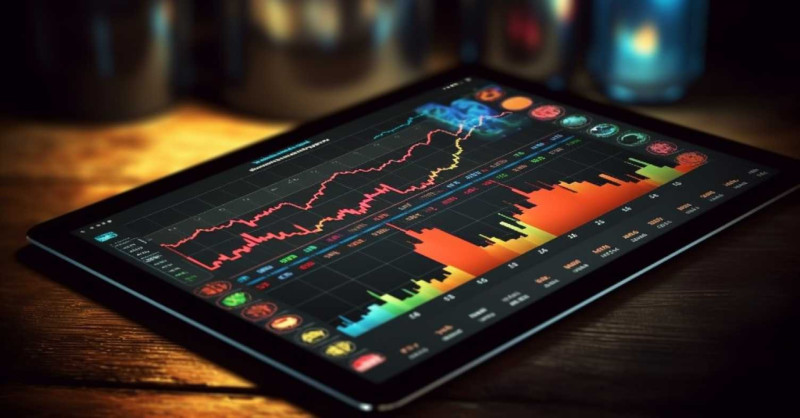
Flexibility: Multiple apps and tools at one's fingertips.
In the rapidly evolving world of stock trading, adaptability and versatility are paramount. While the portability of tablets is a defining advantage, their inherent flexibility offers traders another layer of empowerment. When we talk about flexibility in the context of tablets, we're referring to the ability to multitask, customize, and navigate with ease across various trading apps and tools. Let's delve into this key advantage:
Multitasking Capabilities: Modern tablets come equipped with robust processors and operating systems that enable smooth multitasking. A trader can easily toggle between apps: from analyzing a stock chart, checking an email, to then quickly hopping on a video call—all without any lags or disruptions.
Customization: Tablets allow traders to personalize their workspace. From rearranging app icons for quick access to customizing notification settings for specific stock movements, traders can set up their device in a way that complements their workflow.
Wide Range of Trading Apps: The tablet ecosystem boasts a plethora of trading apps catering to various needs. Whether you're looking for advanced charting tools, real-time stock tickers, or comprehensive market news aggregators, there's likely an app for it. This vast selection empowers traders to curate a suite of tools tailored to their specific needs.
Integration with Peripheral Devices: Tablets can easily integrate with a range of peripherals, enhancing their functionality. Whether it's connecting to an external monitor for a larger view, pairing with a keyboard for extensive typing, or using a stylus for precise chart annotations, the tablet's flexibility shines through.
Regular Updates and Upgrades: Software updates are frequent in the tablet world, introducing new features, improving security, and optimizing performance. Traders can benefit from these regular enhancements, ensuring their device is always up-to-date with the latest advancements.
Cloud Connectivity: Many tablets seamlessly integrate with cloud storage solutions. This not only ensures that all data is backed up but also allows traders to access their files, charts, and reports from any device. If a trader starts a report on their desktop, they can easily pick up where they left off on their tablet.
Interactive Touchscreen Interface: The touch interface of tablets provides an intuitive user experience. Pinching to zoom into charts, swiping between apps, or drawing trend lines with a finger or stylus adds a tactile dimension to trading, making interactions fluid and natural.
In essence, the flexibility tablets offer goes beyond mere convenience—it represents a transformative shift in how traders interact with markets, tools, and data. With the world of stock trading becoming more intricate and demanding, having a device that molds to a trader's unique needs and style is not just an advantage; it's a necessity.
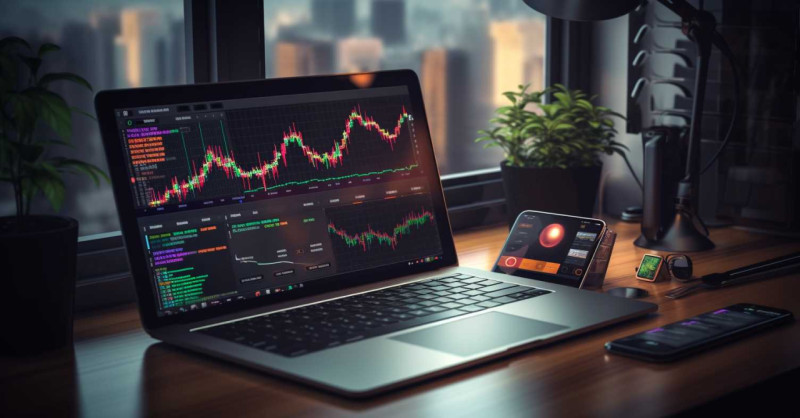
Efficiency: Swift response to market changes
Another critical dimension to consider in the realm of stock trading is efficiency. In an environment where market dynamics can change in the blink of an eye, traders must possess tools that allow them to respond with speed and precision. Tablets, with their intuitive design and cutting-edge technology, have proven to be invaluable assets in this regard. Let's explore the role of tablets in enhancing trading efficiency:
Real-time Alerts and Notifications: Tablets, with their instant-on capability, ensure that traders receive real-time notifications of market shifts, price alerts, or breaking news. This means traders can act promptly, capitalizing on opportunities or averting potential losses.
Instant Trade Execution: Modern trading apps on tablets are designed for swift operations. With just a few taps, traders can execute buy or sell orders, ensuring they capture the desired price point without delays.
Optimized User Experience: Tablet interfaces are typically user-centric, emphasizing clarity, ease of navigation, and responsiveness. This streamlined user experience means traders can access essential functions and tools quickly, enhancing their trading speed.
Less Technical Hiccups: Unlike traditional trading systems that might be prone to glitches or slowdowns, modern tablets, especially high-end models, offer robust performance. This reliability ensures consistent trading without interruptions.
Access to Advanced Analytical Tools: Tablets can effortlessly run sophisticated analytical tools and algorithms. Whether it's executing automated trades based on set criteria or performing in-depth stock analysis, the efficient processing power of tablets is up to the task.
Interactive Data Visualization: One of the hallmarks of tablets is their vivid display. Traders can view complex charts, graphs, and datasets in vibrant detail. This visual clarity allows for quicker data interpretation and decision-making.
Seamless Synchronization: For traders who use multiple devices, tablets often sync seamlessly with other platforms. Whether updating a watchlist, setting alerts, or making notes, the changes reflect in real-time across devices, ensuring consistent and efficient trading.
Voice Commands and Search: Modern tablets come equipped with voice recognition technology. Traders can swiftly search for stocks, pull up charts, or even execute trades using voice commands, making the process even more efficient.
In the high-stakes world of stock trading, where seconds can mean the difference between profit and loss, efficiency is paramount. Tablets, in this context, are more than just devices; they are enablers that amplify a trader's responsiveness, precision, and overall effectiveness. In a market that never truly sleeps, being equipped with a tool that ensures swift reactions to its ebbs and flows can be a game-changer.
Visual Analysis: Large, clear screens for chart and data analysis
While the advantages of tablets in stock trading span across various dimensions, one of the most noteworthy benefits is their capability for visual analysis. The world of stock trading is highly reliant on visual data — be it in the form of charts, graphs, or other graphical representations. The manner in which this data is presented, and the clarity with which traders can interpret it, can heavily influence trading decisions. Here’s how tablets come into play:
High-Resolution Displays: Today's tablets come equipped with screens that boast high resolutions, rendering sharp images and clear text. This clarity becomes crucial when traders need to analyze intricate patterns in stock charts or pore over detailed financial reports.
Optimal Screen Size: Unlike smartphones that might be too compact for detailed analysis, tablets offer a middle ground — they're large enough for comprehensive visual representation yet portable enough to carry around. This balance ensures that traders don't miss out on details that might be pivotal in decision-making.
Interactive Zoom and Pan: The touchscreen interface of tablets allows users to seamlessly zoom in and out of charts or pan across data points. This interactivity ensures that traders can focus on specific sections of data or get a broader overview as needed.
Color Accuracy: Many high-end tablets pride themselves on their color accuracy, ensuring that visuals are displayed as intended. This can be essential when color-coded data points, trend lines, or indicators are used in charts.
Split-Screen and Multi-Window Capabilities: Tablets often allow users to split their screen or open multiple windows simultaneously. For traders, this means they can view a stock chart on one side while keeping an eye on relevant news or market updates on the other.
Adaptable Screen Orientation: Depending on the data being analyzed, traders might prefer a portrait or landscape orientation. Tablets offer the flexibility to switch between these orientations effortlessly, catering to the specific visual needs of different datasets.
Augmented Reality (AR) and 3D Visualization: Some of the latest tablets come with AR capabilities, allowing traders to immerse themselves in a more interactive data visualization experience. This can be especially useful for understanding complex financial models or simulations.
Customizable Display Settings: Traders can adjust brightness, contrast, and other display settings to suit their comfort, ensuring that visual analysis doesn't strain the eyes, especially during extended trading sessions.
In a realm where visuals play a critical role in strategy formulation and decision-making, tablets provide traders with an unparalleled visual analysis tool. The ability to discern patterns, recognize trends, and derive insights from graphical data is amplified manifold with the visual prowess of modern tablets. In essence, they serve as a window into the world of stocks, offering clarity, depth, and precision in every glance.
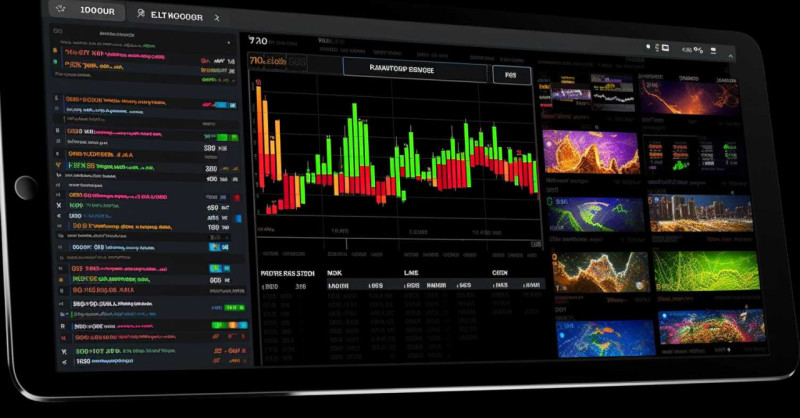
Features to Consider when Choosing a Tablet for Stock Trading
In the world of stock trading, a trader's tools can significantly influence their success. Choosing the right tablet, therefore, becomes paramount. While various features need consideration, one of the foremost aspects to prioritize is the device's performance and speed. Let's delve into why a fast processor is critical for trading:
Performance and Speed: Importance of a Fast Processor
Swift Data Processing: Stock trading platforms handle vast amounts of real-time data, from stock prices and volume data to news feeds and alerts. A fast processor ensures that all this data is processed swiftly, without any lags, offering traders the most up-to-date information.
Seamless Multitasking: Traders often juggle multiple tasks concurrently – monitoring different stocks, analyzing charts, communicating with fellow traders, and executing trades. A high-performance tablet facilitates seamless multitasking, allowing traders to switch between apps effortlessly and ensuring no app slows down or crashes.
Optimized Graphics Rendering: Technical analysis in stock trading frequently involves intricate charts, graphs, and visual indicators. A powerful processor ensures that these visuals are rendered smoothly, providing clear and accurate representations crucial for informed decision-making.
Low Latency: In stock trading, a delay of even a few seconds can result in missed opportunities or potential losses. Tablets with fast processors ensure low latency, allowing traders to react in real-time to market changes.
Enhanced App Performance: Trading apps, especially advanced ones with numerous features, require significant processing power to run optimally. A fast processor ensures that these apps operate at their best, offering traders a smooth and efficient user experience.
Future-proofing: As software and apps get regular updates and become more resource-intensive, having a tablet with a strong processor ensures that it remains competent and relevant for a longer duration. This offers traders better value for their investment.
Efficient Power Consumption: Modern high-performance processors are often optimized for better power consumption. This means they not only provide faster speeds but also ensure that the tablet's battery lasts longer, a vital aspect for traders on the move.
Enhanced Connectivity: A powerful processor often goes hand-in-hand with better connectivity options, ensuring faster Wi-Fi and cellular data speeds. This ensures traders remain connected to their trading platforms and receive real-time data updates consistently.
In conclusion, when it comes to stock trading, time is often equivalent to money. A delay in receiving data, a lag in app performance, or a hiccup in executing a trade can have tangible financial implications. Therefore, prioritizing performance and speed in a tablet is not a mere luxury; it's a necessity for every trader who seeks to stay ahead in the competitive world of stock markets.
Display Quality: Clarity and Screen Size for Detailed Chart Analysis
In the intricate world of stock trading, the importance of visual clarity cannot be understated. The display quality of a tablet plays a pivotal role in a trader's ability to analyze and act on market data. Detailed chart analysis requires both a sharp resolution and an adequately sized screen. A high-resolution display brings out the finer details of charts, ensuring traders don't overlook any crucial information. It makes the differentiation of elements, such as thin trend lines or subtle color variations, discernible, thereby enhancing the accuracy of analysis.
While clarity is paramount, screen size, too, holds significance. A larger screen offers a broader visual real estate, facilitating a more comprehensive view of multiple datasets or an expansive view of a single chart. This expansive view aids traders in spotting patterns, comparing data, or even multitasking without feeling cramped.
Yet, it's not just about the resolution or the size. The color accuracy of a tablet's display can directly impact a trader's interpretations. In the world of stock trading, where color-coded charts and heat maps are prevalent, a slight misrepresentation of color can lead to significant misunderstandings. Furthermore, features like adjustable brightness and contrast come to the fore when traders operate in varied lighting conditions. The ability of a tablet to offer clear visibility, whether indoors or out, ensures that trading isn't hampered by external factors.
Additionally, the responsiveness of a touchscreen has a bearing on the user's experience. Efficient zooming in and out of charts, quick navigation, and pinpoint annotations are made possible by a highly responsive display.
In conclusion, when choosing the best tablet for stock trading, the quality of its display is more than a matter of aesthetics. It's about functionality, accuracy, and comfort. As trading continues to evolve with technological advancements, having a device that offers superior visual clarity becomes indispensable for modern traders.
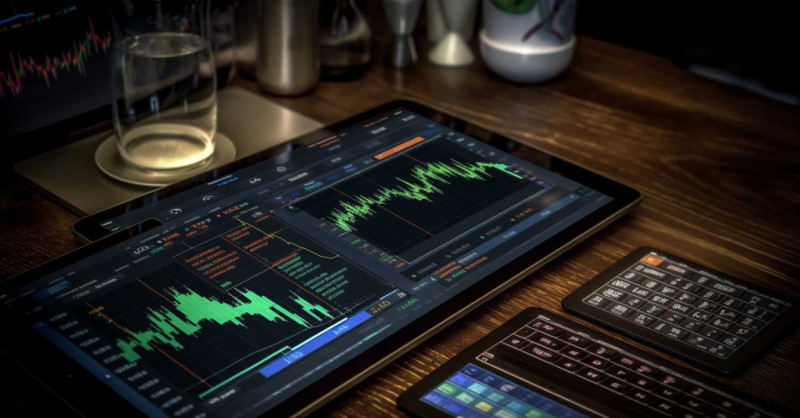
Battery Life: Ensuring your device lasts throughout the trading day
In the fast-paced world of stock trading, continuous connectivity and uninterrupted access to market data are vital. The role of a tablet's battery life in this scenario is undeniably crucial. While the device's performance, display, and features are paramount, all these attributes become redundant if the tablet's battery can't sustain through the trading hours.
Imagine a scenario where a trader is monitoring a volatile stock, poised to make a crucial buying or selling decision, and the tablet's battery drains, severing the connection to the market. The potential financial ramifications of such a scenario highlight the importance of a long-lasting battery.
A tablet's battery life isn't just about the duration it can stay alive, but also how efficiently it supports all the high-performance tasks associated with trading. Stock trading apps, real-time data streaming, chart rendering, and constant connectivity demands can be intensive on a device's battery. Therefore, a tablet chosen for trading should be equipped to handle these tasks efficiently without rapidly depleting its battery.
Additionally, modern lifestyles have blurred the lines between work and leisure. Many traders aren't just tethered to their trading desks but are on the move, attending meetings, traveling, or even balancing work from different locations. In such situations, the convenience of not being constantly worried about charging the device or looking for a power source is invaluable.
It's also worth noting that a tablet with superior battery life often indicates a well-optimized device overall. It's a reflection of efficient hardware-software integration, power management features, and advanced battery technology. Over time, as batteries undergo charge and discharge cycles, their capacity diminishes. Therefore, starting with a tablet known for its extended battery life provides a buffer, ensuring the device remains functional for longer periods, even as its battery ages.
In conclusion, the battery life of a tablet is a testament to its reliability. For stock traders, where every minute counts, and uninterrupted access is non-negotiable, investing in a tablet with a robust battery life is not just a preference—it's a necessity.
Connectivity: Reliable Wi-Fi and Cellular Capabilities
In the realm of stock trading, information is the lifeblood. The speed at which a trader receives updates, acts upon them, and even broadcasts decisions is closely tethered to the connectivity capabilities of their devices. Thus, when we speak of a tablet's suitability for stock trading, its ability to connect—and stay connected—becomes paramount.
Stock markets are dynamic, and real-time data is vital for informed decision-making. A tablet's Wi-Fi capabilities play a significant role here. Fast and stable Wi-Fi ensures that traders can access live stock prices, stream market news, and execute trades without delay. The strength of Wi-Fi reception, its ability to latch onto signals, and seamlessly switch between networks can significantly influence the user's trading experience.
But Wi-Fi is just one side of the connectivity coin. In situations where Wi-Fi might be unavailable or unreliable—like during travel, in remote locations, or even in certain spots within urban centers—a tablet's cellular capabilities come to the fore. A device that supports 4G or 5G networks can provide traders with the assurance that they remain connected to the market pulse, irrespective of their location. This cellular connection acts as a safety net, ensuring uninterrupted trading even in the face of unpredictable Wi-Fi networks.
Beyond just speed, the quality of the connection matters too. A tablet that can reduce instances of dropped connections, minimize latency, and offer consistent bandwidth can make the difference between a trade executed at the right moment and a missed opportunity. Moreover, with cloud synchronization becoming commonplace, a consistently connected device ensures that a trader's data, analyses, and preferences are up-to-date across all platforms.
In wrapping up, it's clear that connectivity is not just a technical specification in a device—it's the bridge that links the trader to the global marketplace. As stock trading continues to evolve in an increasingly digital world, ensuring one's tablet offers top-tier Wi-Fi and cellular capabilities is an investment in reliability, speed, and peace of mind.

Storage: Sufficient space for multiple apps and data
When considering the best tablet for stock trading, it's easy to focus on features like display quality, speed, or connectivity and overlook a fundamental aspect: storage. The capacity to store information, applications, and data securely and efficiently is integral to the smooth functioning of any trading setup.
The nature of stock trading today is far more intricate than it once was. Traders don't just rely on a single trading platform; they employ a suite of tools ranging from advanced charting applications, data analytics software, news aggregators, to communication apps for team collaborations. Each of these applications not only requires space for installation but also generates data, caches, and updates that occupy storage over time.
Beyond applications, traders often download vast datasets for analysis. Historical stock prices, financial reports, market forecasts, and more can take up considerable storage space. In scenarios where traders delve into algorithmic trading or machine learning models to predict market trends, the requirement for storage can exponentially increase.
Sufficient storage isn't just about having space for today's needs but anticipating future requirements. As software becomes more sophisticated and data-heavy, ensuring that one's tablet has the capacity to handle these evolving demands becomes crucial. Running out of storage can hinder performance, slow down access times, and even prevent critical updates or installations.
Additionally, a good balance between onboard storage and expandability can offer flexibility. While having ample built-in storage is vital, the option to expand storage via external means, like microSD cards, can be beneficial for traders who handle large datasets or like to keep archives of historical data.
In essence, storage on a tablet is like the foundation of a building. While it might not be the most visible aspect, its strength and capacity determine how tall, sturdy, and functional the structure can be. For traders, ensuring their tablet has sufficient storage is akin to laying a robust foundation for their digital trading endeavors, guaranteeing efficiency and scalability for the future.
Operating System: Compatibility with Trading Apps and Platforms
In the digital ecosystem of stock trading, the operating system (OS) of a tablet functions as its brain, orchestrating a symphony of applications, tools, and tasks. While hardware features like display quality, battery life, and storage are crucial, the operating system's compatibility with various trading apps and platforms can significantly influence a trader's experience and efficiency.
Different tablets run on distinct operating systems, with the most prevalent ones being Apple's iOS, Google's Android, and Microsoft's Windows. Each OS has its own ecosystem of apps, and while there is significant overlap, some trading platforms and tools may be optimized or exclusively available for a specific system.
For traders, the decision of an OS often boils down to the trading platforms and tools they rely on. If a particular platform offers features that a trader deems indispensable and is only available or best optimized for a certain OS, the choice becomes clear. It's essential to ensure that the tablet's OS supports the full functionality of these platforms, allowing traders to harness all features without limitations.
Beyond just compatibility, the OS plays a role in the overall user experience. Each operating system has its own interface, navigation logic, and customization options. Traders might have a preference based on familiarity, ease of use, or the system's ability to multitask efficiently.
Security is another critical factor influenced by the OS. As stock trading involves sensitive financial data, the operating system's ability to offer robust security features, timely updates, and protection from potential threats becomes paramount.
Integration with other devices is an added consideration. Some traders might use multiple devices in their routine - a smartphone for quick checks, a desktop for in-depth analysis, and a tablet for trading on the go. An OS that offers seamless integration and synchronization across devices can enhance efficiency and consistency in trading operations.
In conclusion, the operating system is the heart of the tablet's software experience. For traders, ensuring that this heart beats in harmony with their preferred trading apps and platforms is crucial. The right OS doesn't just offer compatibility; it enhances usability, ensures security, and optimizes the overall trading experience.
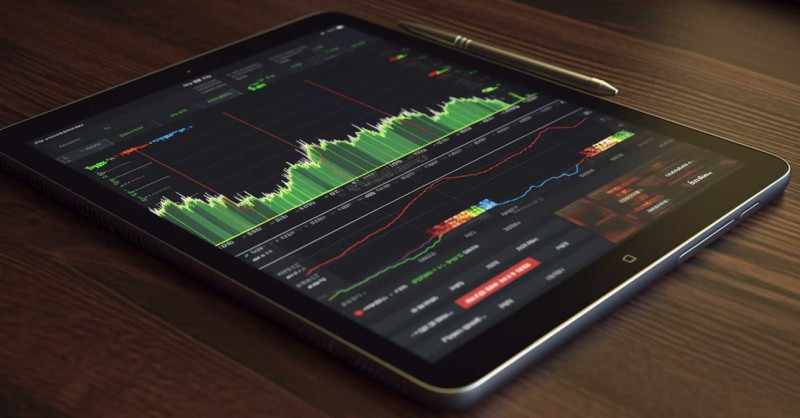
Durability and Build: Ruggedness for Those on the Move
In the dynamic world of stock trading, the emphasis is often on the internal capabilities of a device — its speed, software compatibility, and connectivity. However, the external resilience of a tablet, particularly its durability and build quality, holds equal importance, especially for traders who are constantly on the move.
For such individuals, a tablet is more than just a stationary tool; it's a mobile command center. Whether they're catching a flight, commuting, attending meetings outside their primary workspace, or even trading in outdoor environments, the tablet becomes their primary window to the market. In these varied settings, the device is exposed to potential wear and tear, drops, or other accidental damages.
A well-constructed tablet, built with high-quality materials, ensures that the device isn't just about sleek looks but also about enduring the rigors of daily use. Features like reinforced corners, scratch-resistant screens, or even water and dust resistance can add layers of protection, safeguarding the trader's investment and ensuring uninterrupted operations.
Beyond just accidental drops or scratches, the build quality also influences the tablet's longevity. Devices built with premium materials and solid craftsmanship tend to have a longer lifespan, resisting issues like screen burn-in, button malfunctions, or wear over time.
For traders who often work in challenging environments or have a particularly demanding mobile routine, some tablets are designed with ruggedness at their core. These might come with rubberized exteriors, enhanced shock absorption, and even in-built screen protectors. While they might not win beauty contests, their primary aim is clear: durability under duress.
In wrapping up, while the internal prowess of a tablet is undeniably vital for stock trading, the importance of its external strength can't be overlooked. A durable build ensures that the tablet remains a reliable tool in a trader's arsenal, regardless of where their work takes them. After all, in the volatile world of stocks, having a device that stands firm against external pressures is a metaphorical reassurance many traders would appreciate.
Additional Features: Camera for video calls, compatibility with styluses for note-taking, etc
While the core specifications of a tablet play a direct role in determining its efficacy for stock trading, the inclusion of certain additional features can greatly enhance the overall user experience. These features, though seemingly peripheral, can often streamline a trader's workflow, facilitate better communication, or even offer new avenues for analysis and note-taking.
One such indispensable feature in today's interconnected world is the tablet's camera. As remote work and virtual collaborations become more prevalent, a high-quality camera is crucial for clear video calls. For stock traders, this means being able to discuss strategies with colleagues, consult with experts, or even pitch to potential investors via virtual meetings. A good front-facing camera ensures clear visuals and crisp audio, making virtual interactions smooth and professional.
Stylus compatibility is another feature that can transform a trader's interaction with their tablet. While touchscreens are intuitive, using a stylus can offer a more precise input method. This is especially valuable for traders who delve into detailed chart analyses, making annotations, or highlighting specific trends directly on the chart. A stylus can also aid in taking quick notes during a market event or sketching out strategies.
In addition to these, other supplementary features can be:
Speakers and Audio Quality: For those who follow market news through videos or participate in webinars, having high-quality speakers can make the listening experience more engaging.
Biometric Features: Security is paramount in trading. Features like fingerprint scanners or facial recognition can add an additional layer of security, ensuring that sensitive financial data remains protected.
Expandable Ports: USB-C, HDMI, or SD card slots can enhance the tablet's versatility, whether it's for expanding storage, connecting to larger displays, or even attaching other peripherals.
Software Extras: Some tablets come bundled with specialized software tools — note-taking apps, drawing tools, or even basic analytical software, which can be advantageous for traders.
Ergonomic Design: Features like a kickstand for propping up the tablet or a lightweight yet grippy build can make prolonged usage more comfortable.
In essence, while core specifications lay the foundation for a tablet's suitability for stock trading, these additional features elevate the experience. They ensure that the device isn't just a portal to the stock market, but a versatile tool that adapts to the multifaceted demands of modern trading.

Best Tablets for Stock Trading in 2023
The world of tablets has seen consistent evolution, with manufacturers vying to provide the best features, performance, and user experience. Given the specific demands of stock trading, some tablets naturally stand out for this profession. Here are some notable tablets:
Apple iPad Pro: Apple's flagship tablet has always been a frontrunner in terms of performance and display quality. With its powerful M1 chip (or its subsequent iterations), it offers seamless multitasking, making it perfect for stock trading apps. The Liquid Retina XDR display ensures clear and vibrant visuals, and with Apple Pencil compatibility, detailed annotations on stock charts become a breeze. Its robust app ecosystem and long battery life further accentuate its suitability for traders.
Microsoft Surface Pro 8: This 2-in-1 device from Microsoft merges the power of a laptop with the portability of a tablet. Running on Windows 11, it offers traders access to full-fledged trading software that might not be available on other tablet OSes. With its Surface Pen compatibility, note-taking, and chart analysis become precise. The high-resolution PixelSense display and the device's versatile kickstand make it perfect for those long trading sessions.
Samsung Galaxy Tab S8 Ultra: Samsung's premium offering in the tablet segment is a powerhouse in terms of performance, thanks to its Snapdragon chipsets. The AMOLED display offers deep blacks and vibrant colors, enhancing visual analysis. With DeX mode, it can also mimic a desktop experience, providing traders with a familiar interface. The S Pen compatibility adds another layer of functionality, especially for those who lean heavily on annotations.
Lenovo ThinkPad X12 Detachable: This offering from Lenovo is built with business professionals in mind. Its detachable design makes it versatile, and its performance specs ensure it can handle intensive trading apps. With its robust build quality and enterprise-level security features, it’s a good fit for traders prioritizing durability and data protection.
HP Elite x2 G8: Designed as a competitor to Microsoft's Surface Pro lineup, the HP Elite x2 G8 offers a solid combination of performance, display quality, and security features. It's equipped with 11th Gen Intel processors, ensuring smooth operations, and its bright, clear display is perfect for chart analysis. With a range of configurations and solid build quality, it caters to both casual and professional traders.
While the above list gives a glimpse of the top contenders, it's essential for traders to evaluate tablets based on their specific needs, app preferences, and working style. Factors like operating system preference, brand loyalty, and budget also come into play. However, investing in a top-tier tablet is not just about getting a device; it's about equipping oneself with a reliable partner in the fast-paced world of stock trading.

Comparison of Tablets
When diving into the intricacies of choosing the best tablet for stock trading, a side-by-side comparison of notable devices can offer clarity. Here, we'll compare the tablets mentioned earlier in terms of their features, performance, suitability for stock trading, and their price-to-feature ratio, which is especially important for budget-conscious traders.
| Feature/Model | Apple iPad Pro | Microsoft Surface Pro 8 | Samsung Galaxy Tab S8 Ultra | Lenovo ThinkPad X12 Detachable | HP Elite x2 G8 |
| Display | Liquid Retina XDR | PixelSense Display | AMOLED | FHD+ IPS | Bright FHD+ IPS |
| Performance | M1 Chip | 11th Gen Intel i5/i7 | Snapdragon | 11th Gen Intel i5/i7 | 11th Gen Intel i5/i7 |
| Stylus Compatibility | Apple Pencil | Surface Pen | S Pen | Lenovo Precision Pen | HP Rechargeable Active Pen |
| Operating System | iPadOS | Windows 11 | Android | Windows 11 | Windows 11 |
| Battery Life | Up to 10 hours | Up to 10.5 hours | Up to 13 hours | Up to 9.5 hours | Up to 10 hours |
| Storage Options | 128GB to 2TB | 128GB to 1TB | 128GB to 512GB | 256GB to 1TB | 128GB to 2TB |
| Connectivity | Wi-Fi 6, 5G option | Wi-Fi 6, LTE models | Wi-Fi 6, 5G | Wi-Fi 6, LTE models | Wi-Fi 6, LTE models |
| Price Range | Premium | Mid to Premium | Mid to Premium | Mid-range | Mid to Premium |
Suitability for Stock Trading:
Apple iPad Pro: The iPad Pro, with its robust performance, is highly suitable for traders who rely on fast execution and real-time data. Its vibrant display is a boon for visual analysis, and the App Store offers a plethora of trading apps. The higher end of the price spectrum might deter some, but its performance often justifies the cost.
Microsoft Surface Pro 8: As a 2-in-1, it combines the best of tablets and laptops. It's particularly suitable for traders who prefer the Windows ecosystem and require full-fledged trading software. Price varies significantly based on configurations, but its flexibility offers a strong price-to-feature ratio.
Samsung Galaxy Tab S8 Ultra: This Android powerhouse stands out for its AMOLED display and DeX mode, which offers a desktop-like experience. It's a versatile choice for traders who want both mobility and performance. Though on the pricier side, the features align well with the cost.
Lenovo ThinkPad X12 Detachable: Built with a business focus, its robust build quality and security features make it suitable for professional traders. It offers a balanced price-to-feature ratio, especially for those who prioritize durability.
HP Elite x2 G8: A strong competitor to the Surface Pro lineup, it boasts solid performance and display quality. Its price range is on the higher side, but for traders seeking reliability and Windows compatibility, it's a worthy investment.
Price-to-Feature Ratio for Budget-Conscious Traders:
For those on a budget, the Lenovo ThinkPad X12 Detachable offers a compelling balance of price and features. While it might not have the premium allure of the iPad Pro or Galaxy Tab S8 Ultra, its performance, build quality, and Windows compatibility make it a value-for-money choice for stock trading.
In conclusion, while each tablet has its strengths, the best choice invariably depends on individual preferences, specific trading needs, and budget constraints. However, this comparison provides a foundational understanding to make an informed decision.
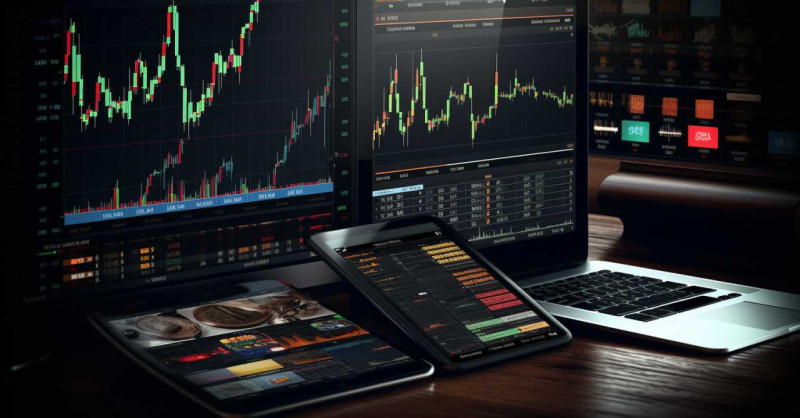
User Reviews and Feedback
While technical specifications provide a comprehensive view of a tablet's capabilities, user reviews and feedback offer real-world insights into how these devices perform in actual trading environments. Here's a synthesized summary based on reviews and feedback up to 2023:
Apple iPad Pro:
- High Praises: Users often commend the iPad Pro's display quality, touting it as one of the best for visual data analysis. Its seamless integration with the Apple ecosystem, especially for users with iPhones or MacBooks, is also highly appreciated.
- Common Issues: Some traders mention that while the iPadOS has come a long way, it still lacks the full desktop experience that certain trading software requires. The price point, particularly for higher storage models, is also a common concern.
Microsoft Surface Pro 8:
- High Praises: Many traders appreciate the flexibility the Surface Pro 8 offers, combining the best of a tablet and a laptop. Its compatibility with Windows-based trading platforms is a significant advantage. The device's kickstand and detachable keyboard also receive positive feedback.
- Common Issues: A few users have pointed out battery life inconsistencies, especially when running multiple resource-intensive applications. Some also desire more ports for better connectivity.
Samsung Galaxy Tab S8 Ultra:
- High Praises: The AMOLED display, with its vibrant colors and deep blacks, is a hit among users. Many also laud the DeX mode for providing a desktop-like experience on a tablet, bridging the gap between mobility and functionality.
- Common Issues: Some traders find the Android app ecosystem to be not as expansive or optimized as those on iPadOS or Windows, especially for niche trading applications. The size of the "Ultra" model, while great for visuals, was occasionally flagged for its bulkiness.
Lenovo ThinkPad X12 Detachable:
- High Praises: Users appreciate its robust build quality and business-centric features. The security measures, including biometric authentication, are well-received, especially among professional traders.
- Common Issues: A few reviews mentioned that while the device performs well for its price range, it doesn't quite match the premium feel or performance of some of its pricier competitors.
HP Elite x2 G8:
- High Praises: Many traders value its performance capabilities and the flexibility of the 2-in-1 design. The device's speakers and audio quality also seem to be a highlight, especially for those who frequently engage in video calls or webinars.
- Common Issues: Some users mentioned the device runs a bit on the warmer side when multitasking heavily. A few also wished for a more streamlined design or lighter build.
In summary, while each tablet has its set of fans and critics, the overarching sentiment is that the right choice hinges on individual needs. Some traders prioritize display quality, while others seek OS compatibility or a specific form factor. User reviews, thus, offer valuable nuances, helping potential buyers gauge which device might align best with their trading style and requirements.
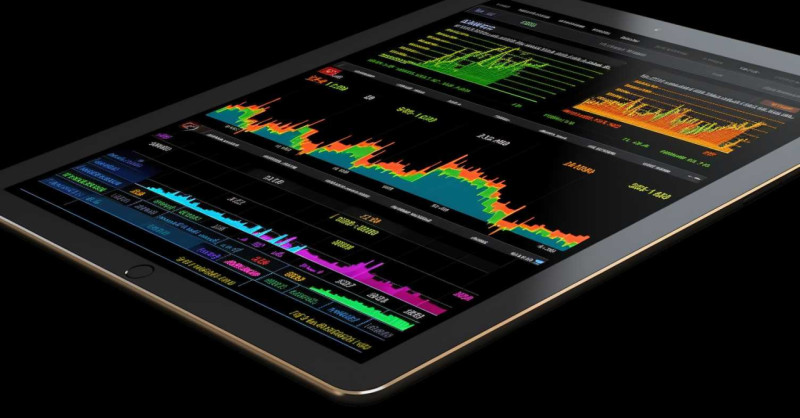
Conclusion
The digital revolution in stock trading has heightened the role of technology, transforming tablets from mere entertainment devices to powerful tools that can shape trading outcomes. As we navigated through the various aspects of selecting the best tablet for stock trading, a few key themes emerged:
- Purpose-driven Features: The importance of attributes like display quality for visual analysis, swift processors for real-time decision-making, and enduring battery life for uninterrupted trading was underscored.
- Holistic Capabilities: Beyond the primary specs, ancillary features like camera quality for video conferencing, stylus compatibility for precise annotations, and the device's durability and ruggedness play a significant role in shaping the user experience.
- Operating System & Compatibility: The choice of OS can deeply influence a trader's workflow, especially in terms of compatibility with specific trading platforms and tools.
- User Experiences: While technical details provide a foundational understanding, user reviews and feedback paint a picture of the real-world performance and potential challenges of each tablet.
As technology continues its relentless march forward, the range of tablets on offer will only grow, both in terms of capabilities and variety. While devices like the iPad Pro or the Surface Pro 8 might be the darlings of the moment, it's crucial to remember that the best tablet is not necessarily the most popular or the most feature-packed. It's the one that aligns seamlessly with an individual's trading style, software preferences, mobility needs, and, of course, budget.
To prospective tablet buyers delving into stock trading, the landscape might seem overwhelming, but the journey to finding the perfect device is also an opportunity. It's a chance to assess one's trading aspirations, understand the role of technology in achieving them, and make an informed choice that enhances efficiency and potential success.
So, while I've laid out the facts and insights, the final decision rests in your hands. Reflect on your trading needs, weigh the pros and cons, and choose a tablet not just for its prowess but for its resonance with your trading journey. Happy trading!
















